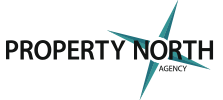
In this week’s Property Pulse we take a look at the housing cycle over the past two decades focusing on growth throughout the regions in five year increments.
Story: Cameron Kusher – Corelogic
Over the past two decades, dwelling values have increased by 231% nationally with increases of 252% across the combined capital cities and 167% across the combined regional markets. The greatest increase in values has been recorded in Melbourne (335%) while the most moderate increase has been recorded in Regional WA where values are just 85% higher.
The accompanying charts show value growth across the country in five year increments. Note that data for the NT is not available until 1999 so no figures are shown for growth to 2003.
The five years to January 2003 contains much of the housing boom that occurred from the turn of the century. Over the period, combined capital city dwelling values increased by 64.0% and combined rest of state values increased by 54.0%. Although capital cities broadly outperformed regional markets, regional NSW recorded the greatest rise in values over the period (84.1%) followed closely by Canberra (79.0%) and then Melbourne (69.9%). Over the same period, regional WA (18.8%) and regional Tas (21.8%) recorded substantially lower value growth than other regions.

Between January 1998 and January 2003, Sydney was the only capital city which recorded a lower rate of value growth than its rest of state region (Regional NSW).
The five years to January 2008 represents the period leading up to the global financial crisis (GFC) which was characterized by the early stages of a mining/infrastructure boom which saw dwelling values surge in areas related to the resources sector.

Over this period, values across the combined rest of state markets (52.5%) increased at a faster pace than the combined capital cities (42.4%) which is largely due to the relevant underperformance of growth in Sydney and Melbourne where economic conditions are more reliant on the performance of the services sector.
The five years to January 2008 saw Sydney (12.6%), regional NSW (26.9%) and regional Vic (38.5%) record the lowest rates of value growth. At the other end of the spectrum, values more than doubled over the five year period in Perth (102.0%) and regional WA (120.7%).
Although value growth was generally stronger for capital cities than regional markets, regional NSW, regional WA and regional Tas were the only regional markets that recorded stronger value growth than their capital city counterparts.
The five year period to January 2013 included the GFC declines in dwelling values and an additional period of decline between 2010 and 2012 as the GFC stimulus was removed from the market.

Over this five year period, combined capital city dwelling values increased by 5.0% while the combined rest of state regions recorded value falls of -4.0%. Over the timeframe, Darwin (31.8%) and regional NT (38.1%) were largely unaffected by the slowdown in the housing market with no other region recording value growth in excess of 18%. On the other hand, each of Brisbane, Perth, Hobart, regional NSW, regional Qld, regional WA and regional Tas recorded falls in dwelling values over the period.
The final chart shows the change in dwelling values over the most recent five year period to January 2018. Over this period dwelling value growth has been heavily slanted towards Sydney and Melbourne (despite falls over recent months).

Over the five year period, capital city dwelling values (43.5%) have increased at more than double the rate of rest of state region values (18.4%).
Sydney (64.4%) and Melbourne (56.4%) have recorded the greatest value rises over the past five years with no other regions recording value growth of more than 38%. Regions of WA and NT have seen values slide over the period down -4.4% in Perth, -20.0% in Darwin, -19.8% in regional WA and -4.6% in regional NT. Regional SA (-1.7%) has also recorded a decline in values over the period.
For Sydney and to a lesser extent Melbourne, the most recent five years bears a similarity to the five years to January 2003. With values now starting to decline in each city it is reasonable to expect that like the five year period to January 2008 these markets may underperform the national and capital city benchmarks. In fact when you consider values are 231% higher over the past 20 years nationally and Sydney (239%) and Melbourne (335%) have recorded value rises in excess of this benchmark, a softer period of growth going forward should be seen as both reasonable and a healthy development for these markets.



